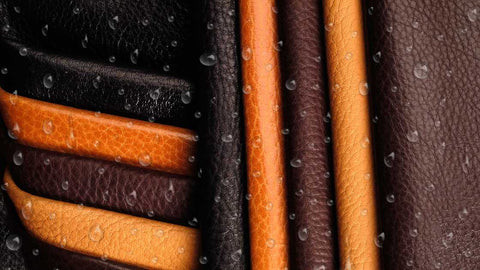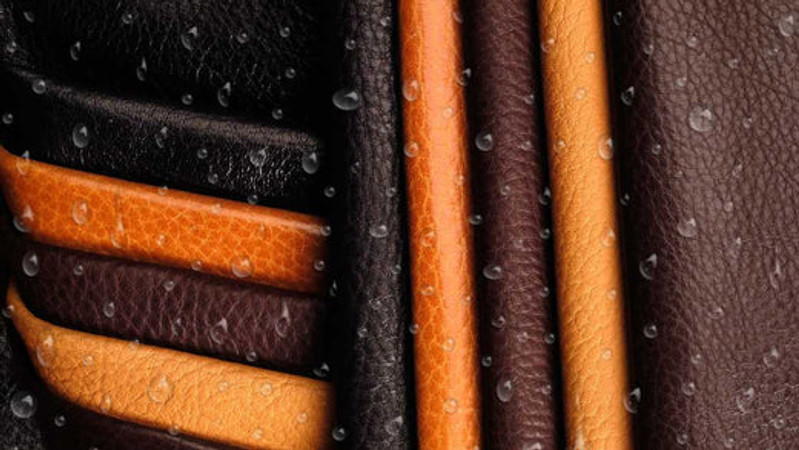What Happens When Leather Gets Wet and How to Save It?
Posted by The Green Tanners on 27th Nov 2024
Water can easily damage leather, turning your favorite mens leather jacket, leather sling bag, or furniture dull, stained, or cracked. A sudden rain, a spilled drink, or storing leather in a damp place can cause serious harm, like mold or loss of softness. But don’t worry—this guide will show you simple ways to fix and protect leather from water damage, so your items can stay in great condition for years. Also their some queries that mostly person wants to know their answer lets go for it.
Can Leather Absorb Water?
Yes, leather absorbs water due to its porous structure. When leather gets wet, its fibers swell, leading to weakening and potential damage. This process can make the leather heavy and prone to deformation.
Why Does Water Leave Stains on Leather?
Water stains form when moisture disrupts the natural oils and pigments in leather. This can result in uneven discoloration or faded spots. Addressing stains promptly can prevent long-term damage.

How Does Mold Develop on Wet Leather?
When leather stays damp in humid or dark environments, it becomes a breeding ground for mold and mildew. These fungi not only cause an unpleasant odor but can also permanently degrade the material.
Does Leather Crack After Getting Wet?
Yes, wet leather is likely to crack when it dries out improperly. Water strips the leather of its natural oils, leaving it brittle and prone to cracks over time.

How Do You Fix Wet Leather Quickly?
Follow these steps to restore your water-damaged leather:
- Blot the Moisture: Use a soft cloth to absorb as much water as possible. Avoid rubbing.
- Air-Dry Naturally: Place the leather in a well-ventilated space and let it dry at room temperature. Avoid using heaters or direct sunlight.
- Clean with a Leather Cleaner: After drying, clean the leather to remove dirt or water spots.
- Apply Leather Conditioner: Use a high-quality conditioner to restore moisture and softness to the leather.
- Protect with a Water-Resistant Spray: Prevent future damage by applying a waterproofing spray.
How Can You Remove Water Stains from Leather?
To remove water stains:
- Use a damp cloth to blend the stained area with the surrounding leather.
- Allow it to air dry naturally.
- Apply a leather conditioner to even out the texture and color.
What Are the Best Ways to Protect Leather from Water Damage?
Prevention is key when it comes to water damage. Follow these tips:
- Use Waterproofing Products: Apply leather protectants like wax or silicone-based sprays regularly.
- Store Properly: Keep leather items in a cool, dry environment away from moisture.
- Condition Often: Condition leather every 3–6 months to maintain its natural oils.

How Long Does It Take Leather to Dry Naturally?
Leather can take anywhere from 24–48 hours to dry completely, depending on the item's thickness and the drying environment. Patience is essential to avoid using heat, which can damage the material.
FAQs on Leather and Water Damage
What Should I Do If My Leather Shoes Get Wet?
Blot away excess water, let them air-dry naturally, and condition them once dry.
Can Leather Bags Be Waterproofed?
Yes, you can use waterproofing sprays or wax to create a moisture barrier on leather bags.
Is It Safe to Use Vinegar on Leather?
Vinegar can be used sparingly for cleaning stains, but it must be diluted to avoid drying out the leather. Always condition afterward.
How Do I Remove Mold from Leather?
Use a damp cloth with a mild soap solution or a leather cleaner designed to remove mold. Dry and condition the leather afterward.
Can I Use Heat to Dry Leather?
No, heat causes leather to dry unevenly and can lead to cracking or shrinkage. Air-drying is the safest method.
What Is the Best Leather Conditioner?
Products like Leather Honey or Bick 4 Leather Conditioner are widely recommended for maintaining leather’s softness and durability.
Conclusion
Water shouldn't have any detrimental effect on your personal belongings, but it can cause serious harm to leather objects by fostering the growth of dampness, creating stains, and reducing their functionality. You can maintain the good state of your leather and avert further damage by being aware of the impact of moisture on it and taking preventive action. You may revitalize your leather items and ensure that they are valued for many years to come with perseverance, commitment, and creative thinking.
Related Articles:


